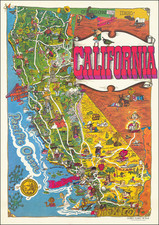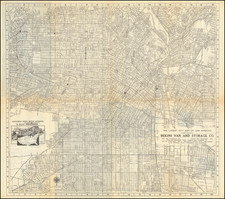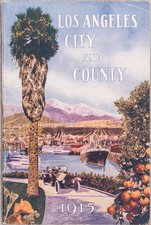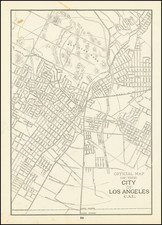Promotional broadsides, such as this one produced by the Janss Investment Co. in 1922, serve as important windows into the socio-economic landscapes of their times. This specific promotional broadside highlights the burgeoning expansion of Los Angeles, focusing especially on the promising prospects of the Belvedere Gardens neighborhood due to infrastructural developments led by the Union Pacific railroad.
The early 1920s marked a pivotal moment in the evolution of American cities, and Los Angeles was no exception. With the onset of the automobile age and an influx of capital, the city's boundaries began expanding rapidly, both in terms of its physical size and economic influence. Central to this particular broadside's narrative is the imminent establishment of Union Pacific's industrial facilities near Belvedere Gardens. Such endeavors typically catalyzed significant urban development, drawing in a cascade of auxiliary businesses, workers, and residents.
Belvedere Gardens, situated in East Los Angeles, exemplifies the rapid urban development that characterized the early 20th century in Southern California. As Los Angeles burgeoned into a major metropolitan center, areas like Belvedere Gardens transitioned from agricultural or undeveloped lands into bustling communities. Real estate companies, sensing the potential of these areas due to their proximity to major infrastructural developments like railways and roadways, promoted such areas heavily. The influence of transportation, both in terms of railways and the nascent era of automobility, was particularly evident in the development strategies of the time. In this context, Belvedere Gardens stood as a testament to the intertwining narratives of urban growth, economic optimism, and the transformative power of infrastructure.
The Janss Investment Co.'s decision to employ snippets from The Los Angeles Evening Herald underpins the significant role that media played in shaping public perceptions and enticing potential investors. By referencing an established newspaper, Janss aimed to bolster its own credibility, suggesting that the opportunity they presented was not just promising but rooted in factual developments. Additionally, the broadside draws parallels to the meteoric rise of Gary, Indiana, following industrial investments by the United States Steel Corporation. This analogy offers potential investors a historical precedent, reinforcing the idea that strategic land investments near major industrial hubs could yield significant returns.
Another noteworthy aspect of this broadside is its emphasis on accessibility and connectivity. Frequent mentions of proximity to major roads and car lines suggest the increasing importance of transportation in shaping urban development during this period. Such inclusions were not mere sales tactics but reflected genuine societal shifts, as the United States leaned more heavily into a car-centric future.
In summation, this promotional broadside from the Janss Investment Co. provides a multifaceted view of early 20th-century Los Angeles. Beyond its overt aim of enticing real estate investment, it encapsulates the optimism, mobility, and rapid urban transformation that characterized the Roaring Twenties in the American West.














![[Southern California Views] Delightful Southern California, The Land of Sunshine and Bloom](https://storage.googleapis.com/raremaps/img/small/74862.jpg)